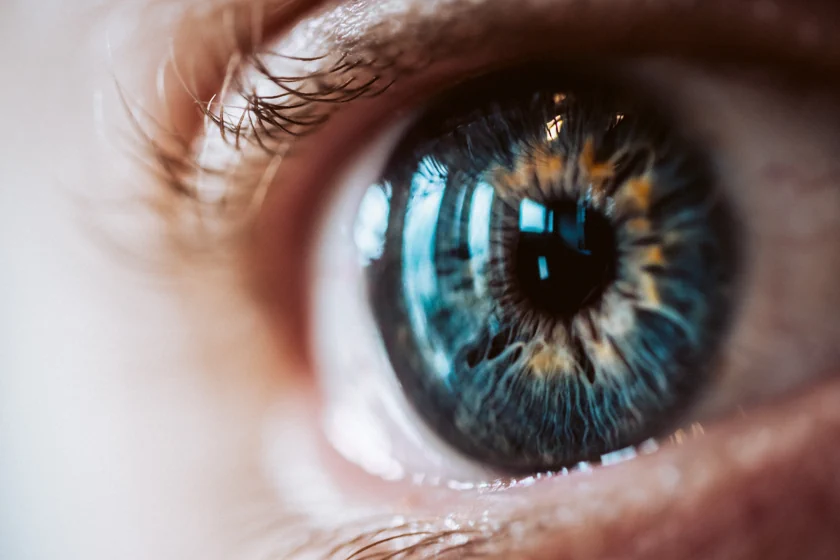|
Getting your Trinity Audio player ready...
|
In a world dominated by screens and digital devices, maintaining optimal eye health has never been more crucial. Research suggests that we now spend more time looking at the screen than we do sleeping. Moreover, if you want to believe figures, digital eye strain prevalence has been up by 97%.
Join us as we embark on a voyage through the fascinating realm of ocular health, where science meets artistry, and where the pursuit of clarity extends far beyond mere visual acuity. Let us unlock the secrets to preserving the vitality of your eyes, empowering you to see the world with renewed clarity and appreciation. Welcome to the ultimate guide to general eye care.
Understanding the Eye Anatomy and Functionality
To appreciate the importance of eye care, it’s essential to first understand the intricacies of eye anatomy and function.
The eye is a marvel of biological engineering, comprising a delicate interplay of structures and mechanisms that enable us to perceive light, color, and depth. From the cornea, the transparent outer layer that acts as the eye’s protective shield, to the retina, the light-sensitive tissue that converts visual stimuli into electrical signals, each component plays a crucial role in the complex process of vision.
Did you know that the human eye can distinguish between approximately 10 million different colors?
This remarkable feat is made possible by specialized cells called cones, which are densely packed in the retina and are responsible for color vision in bright light conditions. Additionally, the eye is one of the most metabolically active organs in the human body, consuming oxygen at a rate higher than any other tissue.
The Importance of Eye Health in the Digital Age
Eye health is paramount in the digital age due to the pervasive use of electronic devices such as computers, smartphones, tablets, and televisions. Here’s why maintaining optimal eye health is crucial in this digital era:
- Prolonged Screen Time
With the rise of remote work, online education, and digital entertainment, individuals are spending more time than ever in front of screens. Prolonged screen time can lead to digital eye strain, characterized by symptoms like eyestrain, dryness, and headaches.
- Blue Light Exposure
Digital screens emit blue light, a high-energy visible light that may penetrate deep into the eye. Excessive exposure to blue light, especially during evening hours, can disrupt circadian rhythms, affect sleep quality, and potentially contribute to retinal damage over time.
- Increased Risk of Myopia
Research suggests that prolonged near work activities, such as reading or focusing on screens, may increase the risk of myopia (nearsightedness), particularly among children and young adults. The prevalence of myopia has been on the rise, posing significant concerns for long-term vision health.
- Impact on Overall Well-being
Eye strain and discomfort from prolonged screen use can impact overall well-being and productivity. Chronic eye issues may lead to decreased quality of life, affecting daily activities and causing undue stress and discomfort.
- Preventable Eye Conditions
Neglecting eye health in the digital age can lead to the development or exacerbation of various eye conditions, including dry eye syndrome, computer vision syndrome, and even age-related macular degeneration. By prioritizing preventive measures and regular eye care, individuals can reduce the risk of these conditions and maintain optimal vision health.
Top Tips for Preventing Digital Eye Strain
Here are some top tips for preventing digital eye strain:
Follow the 20-20-20 Rule: Every 20 minutes, take a 20-second break, and look at something at least 20 feet away. This allows your eyes to relax and refocus, reducing the strain caused by prolonged screen time.
Adjust Screen Settings: Optimize your screen settings for comfort. Adjust the brightness, contrast, and font size to reduce glare and make text easier to read. Consider using dark mode or reducing blue light emission, especially in the evening.
Maintain Proper Ergonomics: Position your screen at eye level and ensure proper posture while using digital devices. Use ergonomic furniture and accessories to minimize neck, shoulder, and back strain.
Blink Frequently: Blinking helps lubricate the eyes and prevent dryness, which is common during extended screen use. Make a conscious effort to blink more frequently, or use artificial tears to keep your eyes moist.
Take Regular Breaks: Incorporate short, frequent breaks into your screen time routine. Use these breaks to stretch, walk around, or engage in activities that don’t require screen use. This allows your eyes to rest and recover from prolonged focusing.
Use Blue Light Filters: Consider using blue light filters or glasses with blue light-blocking lenses to reduce exposure to harmful blue light emitted by digital screens. These filters can help alleviate eye strain and minimize the disruption of circadian rhythms caused by blue light exposure.
Practice the Palmer’s Technique: To reduce the risk of developing carpal tunnel syndrome or other repetitive strain injuries, practice the Palmer’s technique when using a keyboard or mouse. This involves keeping your wrists straight and your hands floating above the keyboard, rather than resting on it.
Conclusion
In conclusion, preventing digital eye strain is crucial in our technology-driven world. Simple strategies like the 20-20-20 rule, adjusting screen settings, maintaining proper ergonomics, and using blue light filters can significantly reduce discomfort. Regular breaks, blinking often, and practicing the Palmer’s technique also contribute to eye well-being. Prioritizing eye health not only enhances productivity and comfort but also safeguards long-term vision health.
For personalized consultation and expert guidance on eye health, you can connect with Dr. Surbhi Kapadia, a renowned ophthalmologist specializing in digital eye strain and preventive eye care. Dr. Kapadia offers comprehensive eye examinations, tailored recommendations, and treatment options to address individual needs and concerns. Take proactive steps towards preserving your vision and reaching out to Dr. Surbhi Kapadia for expert guidance on digital eye strain and overall eye health.
FAQs
What is digital eye strain, and what are its symptoms?
Digital eye strain, also known as computer vision syndrome, refers to discomfort or fatigue experienced after prolonged screen use. Symptoms may include eyestrain, dryness, blurred vision, headaches, and neck or shoulder pain.
How does blue light emitted from screens affect eye health?
Blue light exposure from digital screens can disrupt sleep patterns, increase the risk of macular degeneration, and potentially cause retinal damage. Protecting against excessive blue light exposure may help preserve eye health.
Are children more susceptible to eye problems from digital device use?
Yes, children may be more susceptible to eye problems due to prolonged screen time. Excessive screen use during critical developmental stages can contribute to the development of myopia (nearsightedness) and other vision issues.
What can I do to prevent digital eye strain while working remotely or studying online?
To prevent digital eye strain, follow the 20-20-20 rule (take a 20-second break every 20 minutes and look at something 20 feet away), adjust screen settings for comfort, maintain proper ergonomics, and use blue light filters.
How often should I have my eyes examined if I spend a significant amount of time on digital devices?
It's advisable to have regular eye exams, especially if you spend a lot of time on screens. You can consult with Dr. Surbhi Kapadia to determine the frequency of exams based on your individual needs and risk factors.
![]()







